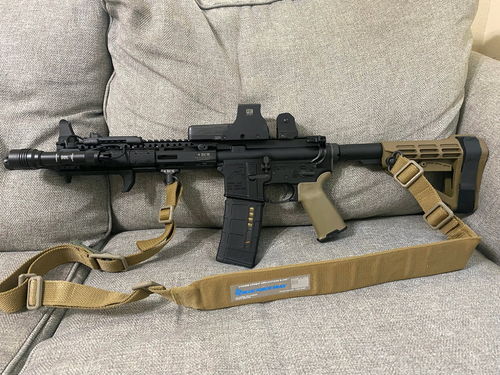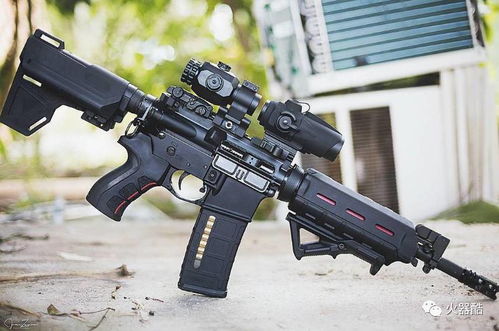AK versus AR: A Comprehensive Comparison
When it comes to the world of firearms, the AK and AR are two of the most iconic and widely recognized rifle designs. Both have their unique features, strengths, and weaknesses, making them popular choices for various applications. In this detailed comparison, we will delve into the history, design, performance, and practical uses of the AK and AR to help you understand which one might be the better fit for your needs.
History and Origin

The AK series was developed by Mikhail Kalashnikov in the Soviet Union during the late 1940s. It was designed as a response to the need for a lightweight, reliable, and easy-to-maintain rifle for the Soviet military. On the other hand, the AR-15 was developed by Eugene Stoner in the United States in the early 1950s. It was initially designed for the U.S. military’s request for a lightweight, selective-fire rifle.
Design and Construction

The AK series is known for its distinctive design, featuring a distinctive curved magazine and a distinctive “banana” stock. The rifle is made from stamped steel, which makes it lightweight and durable. The AK’s design is simple and robust, with few moving parts, which contributes to its reliability and ease of maintenance. The AR-15, on the other hand, has a more modern design, with a lightweight aluminum receiver and a polymer lower receiver. The rifle is also known for its modularity, allowing for easy customization and attachment of various accessories.
Caliber and Performance

The AK series is available in various calibers, with the most common being the 7.62x39mm. This caliber offers good penetration and is effective against both personnel and light armor. The AK’s performance is generally reliable, with a reputation for functioning in harsh conditions. The AR-15 is available in a wider range of calibers, including 5.56x45mm, .223 Remington, and .308 Winchester. The rifle’s performance is also reliable, with good accuracy and a high rate of fire. The choice between the two will depend on your specific needs and preferences.
Reliability and Durability
One of the most significant advantages of the AK series is its reliability. The rifle is known for its ability to function in extreme conditions, including mud, water, and sand. This is due to its simple design and the use of stamped steel components. The AR-15 is also a reliable rifle, but it may not perform as well in harsh conditions as the AK. However, the AR’s modular design allows for easier maintenance and customization, which can improve its reliability over time.
Practical Uses
The AK series is widely used by military and law enforcement agencies worldwide. Its reliability and durability make it an excellent choice for combat and peacekeeping missions. The rifle is also popular among civilian shooters for hunting, target shooting, and self-defense. The AR-15 is also used by military and law enforcement agencies, but it is more popular among civilian shooters for recreational shooting, competition, and home defense. Its modularity and accuracy make it a versatile choice for various applications.
Cost and Availability
The AK series is generally more affordable than the AR-15, making it a popular choice for budget-conscious shooters. The rifle is also widely available, with numerous manufacturers producing various models and calibers. The AR-15 is also available at a reasonable price, but it may be more expensive than the AK. However, the cost of accessories and modifications can vary significantly between the two.
Conclusion
When comparing the AK and AR, it’s essential to consider your specific needs and preferences. The AK series is known for its reliability, durability, and affordability, making it an excellent choice for those who require a rugged, versatile rifle. The AR-15 is a more modern, modular design that offers greater customization and accuracy, making it a popular choice for recreational shooters and competitive shooters. Ultimately, the choice between the two will depend on your individual requirements and budget.
| Feature | AK Series | AR-15 |
|---|---|---|
| Origin | Soviet Union | United States |
| Design | Simple, robust, stamped steel | Modern, modular, lightweight aluminum |










